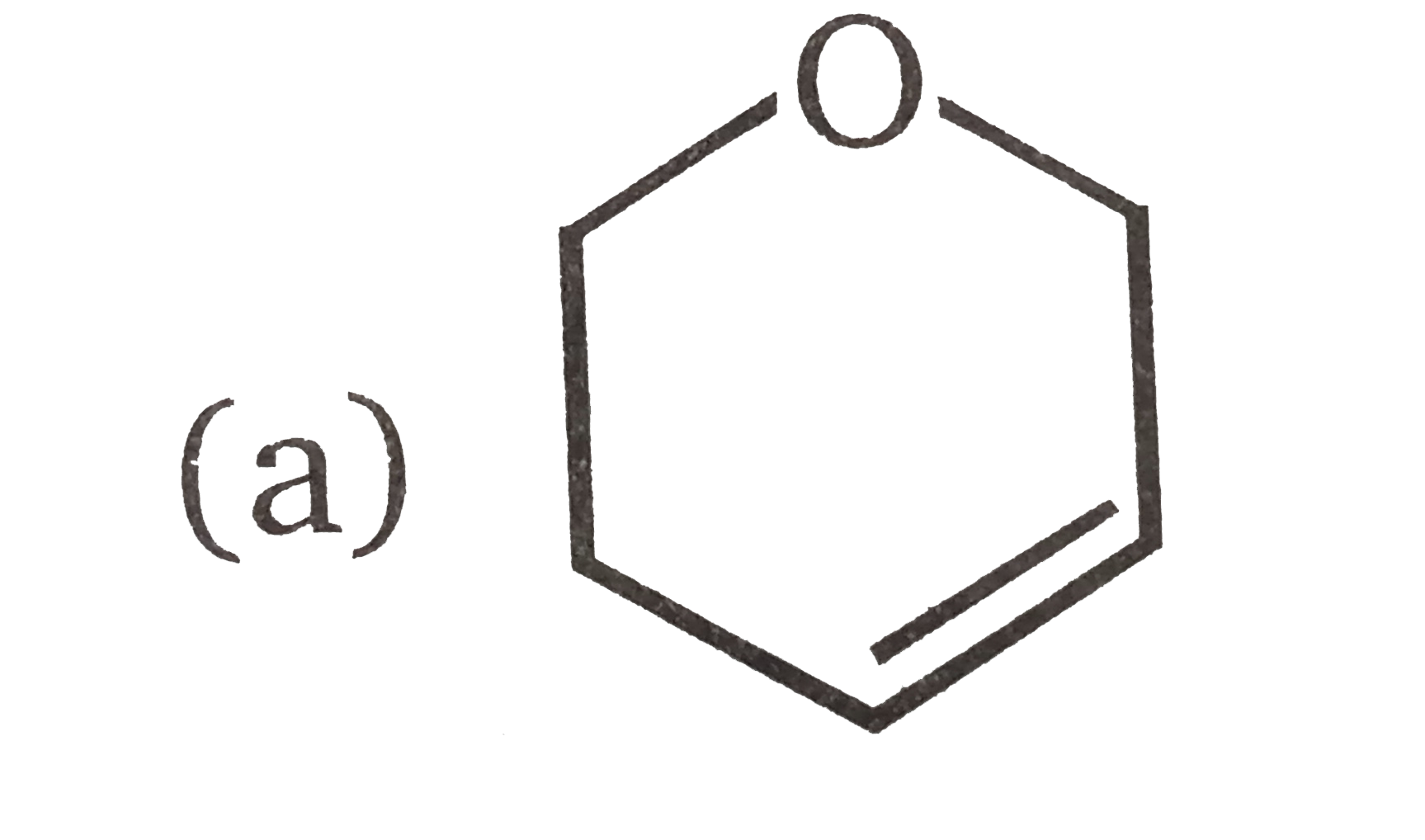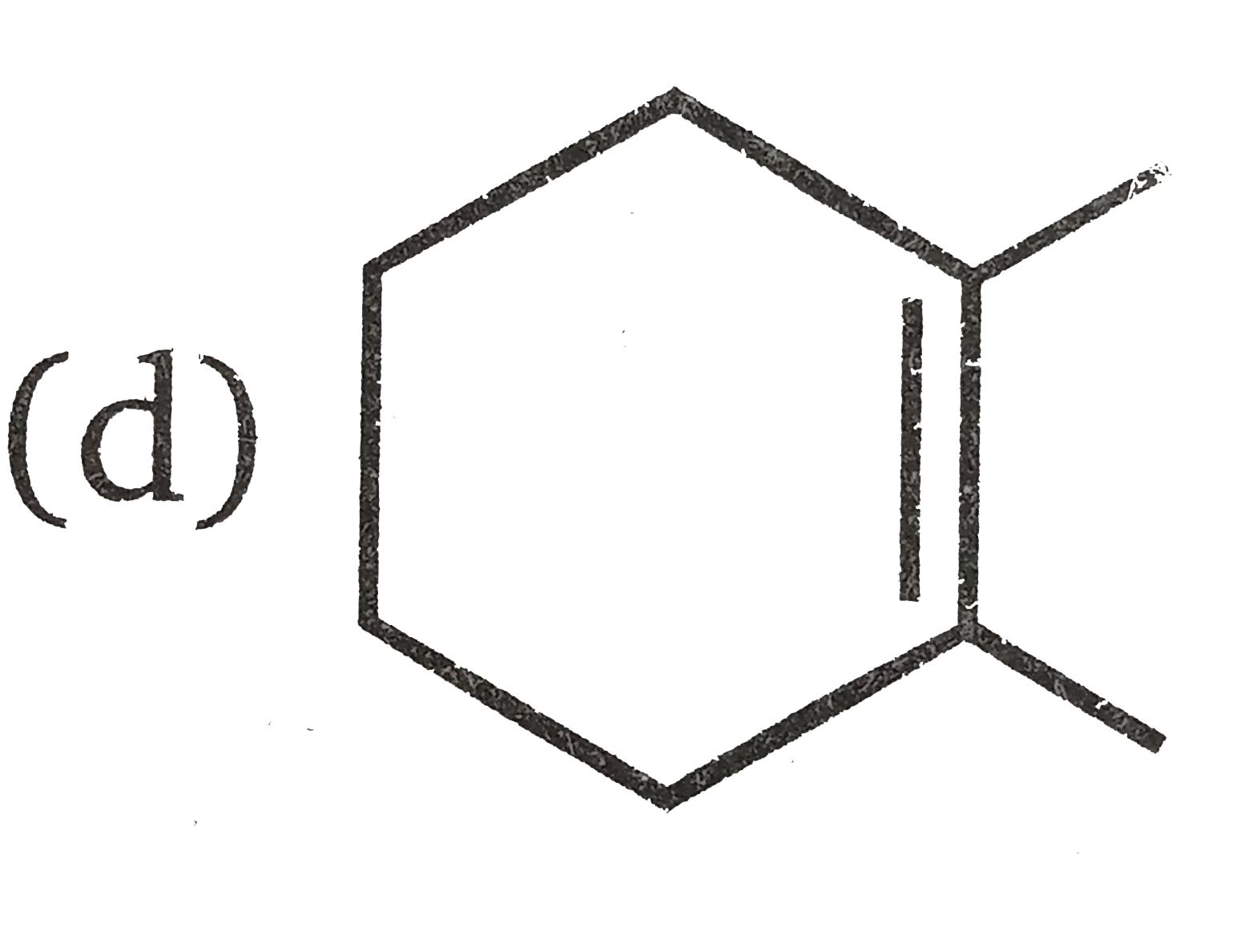Alkene and alkyne both undergo electrophilic additon beacuise of π electron density, they behave as elctron rich species, alknens are more reactive toward this reaction because the intermiediate formed when anE⊕ adds to an alkyne is a vinylic cation wheras sthe intermediate formed when an E⊕ adds to akene is alkyl cation, which is mopre stable.
 In the reaction:
In the reaction:





The correct Answer is:C
Step by step video, text & image solution for Alkene and alkyne both undergo electrophilic additon beacuise of pi electron density, they behave as elctron rich species, alknens are more reactive toward this reaction because the intermiediate formed when anE^(oplus) adds to an alkyne is a vinylic cation wheras sthe intermediate formed when an E^(oplus) adds to akene is alkyl cation, which is mopre stable. In the reaction: by Chemistry experts to help you in doubts & scoring excellent marks in Class 11 exams.
Updated on:21/07/2023Topper's Solved these Questions
Similar Questions
Vladimir Markovnikov rule:
Alkenes undergo electrophilic addition reactions. It is triggered by the acid acting as a electrophile toward π-electrons of the double bond.
Markovnikov's rule states that when an unsymmetrically substituted alkene reacts with a hydrogen halide, the hydrogen atom adds to the carbon that has the greater number of hydrogen, e.g.,
 In which of the following reactions, product is racemic mixture?
In which of the following reactions, product is racemic mixture?
View SolutionVladimir Markovnikov rule:
Alkenes undergo electrophilic addition reactions. It is triggered by the acid acting as a electrophile toward π-electrons of the double bond.
Markovnikov's rule states that when an unsymmetrically substituted alkene reacts with a hydrogen halide, the hydrogen atom adds to the carbon that has the greater number of hydrogen, e.g.,

What is the energy profile for the given reaction?
View Solution
Knowledge Check
Vladimir Markovnikov rule:
Alkenes undergo electrophilic addition reactions. It is triggered by the acid acting as a electrophile toward π-electrons of the double bond.
Markovnikov's rule states that when an unsymmetrically substituted alkene reacts with a hydrogen halide, the hydrogen atom adds to the carbon that has the greater number of hydrogen, e.g.,
 In which of the following reaction, diastereomers will be formed?A
In which of the following reaction, diastereomers will be formed?A B
B C
C D
D
Vladimir Markovnikov rule:
Alkenes undergo electrophilic addition reactions. It is triggered by the acid acting as a electrophile toward π-electrons of the double bond.
Markovnikov's rule states that when an unsymmetrically substituted alkene reacts with a hydrogen halide, the hydrogen atom adds to the carbon that has the greater number of hydrogen, e.g.,
 Which of the following is most reactive toward Markovnikov addition?A
Which of the following is most reactive toward Markovnikov addition?A B
B C
C D
D
Vladimir Markovnikov rule:
Alkenes undergo electrophilic addition reactions. It is triggered by the acid acting as a electrophile toward π-electrons of the double bond.
Markovnikov's rule states that when an unsymmetrically substituted alkene reacts with a hydrogen halide, the hydrogen atom adds to the carbon that has the greater number of hydrogen, e.g.,

In which of following reactions, carbocation rearrangement is possible?A(CH3)4CH−CH=CH2HCl−−−−−→0∘CB(CH3)3C−CH=CH2HBr−−−−−−−→0∘C/Cl4CPh−CH2−CH=CH2HBr−−−−−→CCl4DAll of these
Vladimir Markovnikov rule:
Alkenes undergo electrophilic addition reactions. It is triggered by the acid acting as a electrophile toward π-electrons of the double bond.
Markovnikov's rule states that when an unsymmetrically substituted alkene reacts with a hydrogen halide, the hydrogen atom adds to the carbon that has the greater number of hydrogen, e.g.,

Identify the major products r1,r2 and r3 in the given reactions

View SolutionAromatic hydrocarbons are highly unsaturated molecules but behave like saturated hydrocarbons. Those which contain a benzene ring are called benzenoids but those which contain some highly unsaturated ring other than benzene are called non-benzenoids. Their aromatic character can be ascertained through Hückel rule. Aromatic hydrocarbons are, however, more reactive than alkanes but are less reactive than alkenes and alkynes. The lower reactivity of arenes is because of the extra stability associated with these molecules due to delocalization of -electrons. Their stability is measured in terms of resonance energy which can be estimated from either heat of combustion or heat of hydrogenation data. They normally undergo electrophilic substitution reactions. In presence of a Lewis acid catalyst, nuclear halogenation occurs but in absence of Lewis acid catalyst and in presence of light, halogens add to the benzene ring. If an aromatic hydrocarbon contains an alkyl side chain, then in presence of heat/light side chain halogenation occurs in preference to addition of halogens to the benzene ring. The reactivity of aromatic hydrocarbons towards electrophilic substitution reactions depends upon the electron density in the benzene ring. Electron-donating groups favour while electron-withdrawing groups retard these reactions. Orientation of electrophilic substitution reactions is governed by the nature of the substituent already present in the ring. Although aromatic hydrocarbons are resistant to oxidising agents (KMnO4,K2Cr2O7, etc.) they do undergo ozonolysis.
In the reaction of C6H5Y, the major product ( gt 60%) is m-isomer , so the group Y is
View SolutionAromatic hydrocarbons are highly unsaturated molecules but behave like saturated hydrocarbons. Those which contain a benzene ring are called benzenoids but those which contain some highly unsaturated ring other than benzene are called non-benzenoids. Their aromatic character can be ascertained through Hückel rule. Aromatic hydrocarbons are, however, more reactive than alkanes but are less reactive than alkenes and alkynes. The lower reactivity of arenes is because of the extra stability associated with these molecules due to delocalization of -electrons. Their stability is measured in terms of resonance energy which can be estimated from either heat of combustion or heat of hydrogenation data. They normally undergo electrophilic substitution reactions. In presence of a Lewis acid catalyst, nuclear halogenation occurs but in absence of Lewis acid catalyst and in presence of light, halogens add to the benzene ring. If an aromatic hydrocarbon contains an alkyl side chain, then in presence of heat/light side chain halogenation occurs in preference to addition of halogens to the benzene ring. The reactivity of aromatic hydrocarbons towards electrophilic substitution reactions depends upon the electron density in the benzene ring. Electron-donating groups favour while electron-withdrawing groups retard these reactions. Orientation of electrophilic substitution reactions is governed by the nature of the substituent already present in the ring. Although aromatic hydrocarbons are resistant to oxidising agents (KMnO4,K2Cr2O7, etc.) they do undergo ozonolysis.
Reaction of benzene with excess of Cl2 in presence of light and in presence of anhydrous AlCl3 and in dark give respectively
View SolutionAromatic hydrocarbons are highly unsaturated molecules but behave like saturated hydrocarbons. Those which contain a benzene ring are called benzenoids but those which contain some highly unsaturated ring other than benzene are called non-benzenoids. Their aromatic character can be ascertained through Hückel rule. Aromatic hydrocarbons are, however, more reactive than alkanes but are less reactive than alkenes and alkynes. The lower reactivity of arenes is because of the extra stability associated with these molecules due to delocalization of -electrons. Their stability is measured in terms of resonance energy which can be estimated from either heat of combustion or heat of hydrogenation data. They normally undergo electrophilic substitution reactions. In presence of a Lewis acid catalyst, nuclear halogenation occurs but in absence of Lewis acid catalyst and in presence of light, halogens add to the benzene ring. If an aromatic hydrocarbon contains an alkyl side chain, then in presence of heat/light side chain halogenation occurs in preference to addition of halogens to the benzene ring. The reactivity of aromatic hydrocarbons towards electrophilic substitution reactions depends upon the electron density in the benzene ring. Electron-donating groups favour while electron-withdrawing groups retard these reactions. Orientation of electrophilic substitution reactions is governed by the nature of the substituent already present in the ring. Although aromatic hydrocarbons are resistant to oxidising agents (KMnO4,K2Cr2O7, etc.) they do undergo ozonolysis.
Which of the following is not a non-benzenoid aromatic compound ?
View SolutionAromatic hydrocarbons are highly unsaturated molecules but behave like saturated hydrocarbons. Those which contain a benzene ring are called benzenoids but those which contain some highly unsaturated ring other than benzene are called non-benzenoids. Their aromatic character can be ascertained through Hückel rule. Aromatic hydrocarbons are, however, more reactive than alkanes but are less reactive than alkenes and alkynes. The lower reactivity of arenes is because of the extra stability associated with these molecules due to delocalization of -electrons. Their stability is measured in terms of resonance energy which can be estimated from either heat of combustion or heat of hydrogenation data. They normally undergo electrophilic substitution reactions. In presence of a Lewis acid catalyst, nuclear halogenation occurs but in absence of Lewis acid catalyst and in presence of light, halogens add to the benzene ring. If an aromatic hydrocarbon contains an alkyl side chain, then in presence of heat/light side chain halogenation occurs in preference to addition of halogens to the benzene ring. The reactivity of aromatic hydrocarbons towards electrophilic substitution reactions depends upon the electron density in the benzene ring. Electron-donating groups favour while electron-withdrawing groups retard these reactions. Orientation of electrophilic substitution reactions is governed by the nature of the substituent already present in the ring. Although aromatic hydrocarbons are resistant to oxidising agents (KMnO4,K2Cr2O7, etc.) they do undergo ozonolysis.
The enthalpy of hydrogenation of cyclohexene is −119.5kJ mol−1.If resonance energy of benzene is −150.4kJ mol−1, its enthalpy of hydrogenation would be
View Solution
